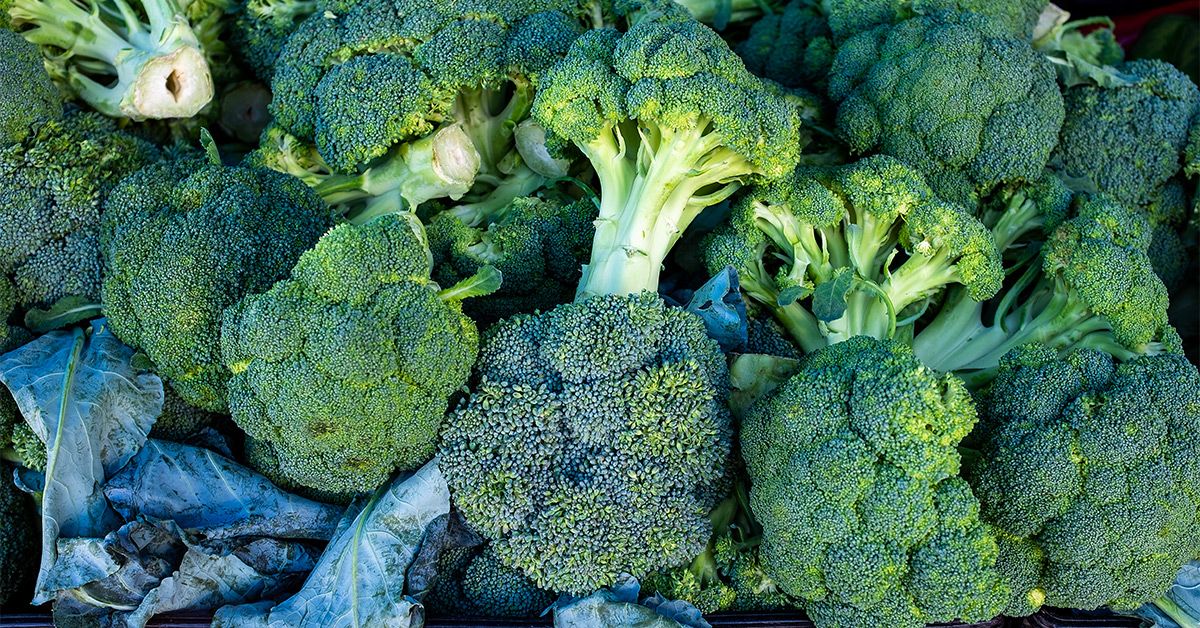High blood pressure, also known as hypertension, can increase the risk of heart attack and stroke, so it’s essential to control it. Controlling high blood pressure can involve dietary changes.
The researchers of the current study wanted to see how cruciferous vegetables, compared to root and squash vegetables, affected blood pressure. Cruciferous vegetables include vegetables like kale, broccoli, and cauliflower.
Researchers measured how cruciferous vegetables affected 24-hour brachial systolic blood pressure. Systolic blood pressure is the top blood pressure number, which measures when the heart muscles contract.
This research was a randomized, controlled, crossover trial that recruited 18 Australian participants between 56 and 72 years old.
Recruited participants had mild or moderately high blood pressure, defined as a systolic blood pressure between 120 and 160 mmHg and a diastolic reading of less than 100 mmHg. The mean systolic blood pressure at baseline was considered mildly elevated at 135.9 mmHg, and the mean diastolic blood pressure was 76.4 mmHg.
Researchers had participants fill out a dietary questionnaire to establish baseline diets and typical consumption of cruciferous vegetables. They also gathered data on physical activity and stress levels.
Participants took part in two, two-week long interventions with a two-week break in between the interventions. For one of the intervention periods, participants received the control, which consisted of four servings of root and squash vegetables a day.
For the other intervention period, participants received the active intervention, which consisted of four servings of cruciferous vegetables a day. Participants ate the vegetables prepared as soups with lunch and dinner each day. Researchers provided participants with lunch, dinner, and the corresponding vegetables. 72% of participants adhered to eating all of their assigned soups.
In the end, researchers did exclude one of the 18 participants from the analysis on ambulatory blood pressure because the participant declined participation after the first blood pressure reading.
Positive effects on blood pressure, triglycerides
Overall, researchers found that consuming cruciferous vegetables helped to decrease systolic blood pressure during the day after the two week intervention but did not seem to impact nighttime systolic blood pressure.
They also observed an increase in nighttime aortic diastolic blood pressure among active intervention participants compared to the control group between interventions. Additionally, they reported an increase in heart rate in the active intervention relative to the control intervention participants. However, researchers believe that this noted heart rate difference was because of the decreases in heart rate in the control intervention group.
The researchers also found that participants in the active intervention experienced a significant decrease in serum triglyceride levels compared to the control group.
Both groups also lost weight, which can be an important component of blood pressure management. However, since they lost similar amounts, weight loss doesn’t seem to be the reason for the differences in blood pressure between the two groups.
Study authors Emma Connolly, PhD candidate with the Nutrition and Health Innovation Research Institute at Edith Cowan University, and Lauren Blekkenhorst, PhD RNutr, National Health and Medical Research Council of Australia Emerging Leadership Fellow, noted the following to Medical News Today:
“We found a 2.5 mmHg reduction in 24-hour ambulatory systolic blood pressure, which can translate to roughly 5% lower risk of experiencing a major cardiovascular disease event, such as a heart attack or stroke. Cruciferous vegetables typically only make up a small portion of total vegetables consumed by the adult population so strategies to increase these vegetables will likely lead to substantial impacts on reducing burden of cardiovascular disease.”
Christopher Berg, MD, a board-certified cardiologist at MemorialCare Heart and Vascular Institute at Orange Coast Medical Center in Fountain Valley, CA, who was not involved in the study, also noted the following about the study’s findings:
“This is a fascinating study because it illustrates that by simply eating higher amounts of a natural whole food, it might be possible to make significant changes to our biology and improve our blood pressure. This effect is likely due to biological effects of micronutrients that are particular to cruciferous vegetables, as the comparison soup had similar calories, macronutrients, and sodium to that of the cruciferous vegetable soup.”
This study’s limitations do impact the interpretation of the results. First, it included less than 20 participants, so studies with larger sample sizes could help verify this study’s findings. Sixteen of the participants were female, and 94% of the participants were white, indicating a lack of diversity. Researchers also note that it is difficult to generalize the results because of this and because the group had a higher vegetable intake at baseline than the general population.
The small sample size could have also impacted the secondary outcomes of the study, and the recruitment process was affected by the COVID-19 pandemic. The study only went on for a short time frame, so longer follow-up may be helpful. Complete blinding of participants wasn’t possible because of differences in soup taste, but researchers didn’t tell participants what vegetables were in the soups or which was the active intervention or control. There was also a higher intake of protein in the active intervention group, but researchers do not think that this had an effect on their findings.
Participants also had to report their food intake, which might not reflect true dietary patterns. However, researchers also looked at biomarkers to evaluate adherence. While researchers controlled lunch and dinner consumption, they didn’t offer much control over participants’ other food intake, and there was some consumption of cruciferous vegetables outside of the assigned soups.
Finally, it’s not entirely clear what components of cruciferous vegetables were responsible for the results. Future research can look into why cruciferous vegetables appear to have this positive influence on blood pressure.
“This study is very limited, in that there were only 18 participants who completed it. I would like to see more studies done where they can get more participants, and really analyze what are the properties of the cruciferous vegetables that are so beneficial. This study compared intake of cruciferous vegetables compared to intake of potatoes, sweet potatoes and carrots. I wonder if they compared them to string beans and asparagus, if there would have been a difference.”
Overall, this study suggests that cruciferous vegetables help lower systolic blood pressure, but they also have other health benefits that people may want to take advantage of.
“Cruciferous vegetables are mainly your leafy greens like kale, collard greens, cabbage, brussels sprouts, etc. They also include cauliflower and broccoli. They are all known to have glucosinolates, which may be able to help fight cancer. They are also loaded with fiber, which helps lower cholesterol and improve gut health and vitamin C which is good for your immune system. Cruciferous veggies are also good for your blood since they have vitamin K (which is important for blood clotting) and folate which helps produce red blood cells.”
— Karen Berg
People who want to make changes to their diet to improve blood pressure should always do so safely with help from medical professionals who understand their unique circumstances and dietary needs.
Christopher Berg noted the following about making dietary choices that with blood pressure reduction:
“Often, the most successful dietary changes are ones that are sustainable – usually small incremental changes made over time. Think more like ‘add 1 serving of vegetables to each dinner’ rather than ‘forsake all meat starting Monday’.”
For those interested in eating more cruciferous vegetables, Karen Berg offered the following tips:
“Many cruciferous veggies can be eaten raw, or simply grilled. Some easy ways to incorporate them into your diet is by adding kale to a breakfast smoothie, making salads with brussels sprouts or shaved cabbage, or simply snacking on raw broccoli or cauliflower with hummus. Maybe make a plan to try one new cruciferous vegetable per week so that you add variety and spice things up!”



